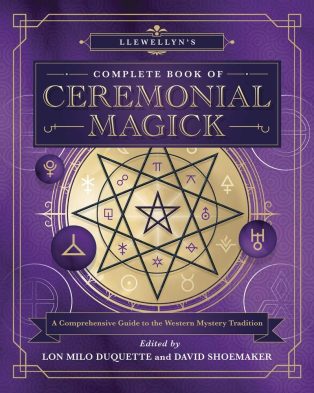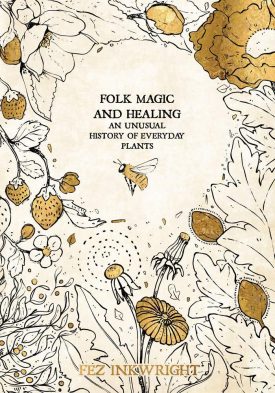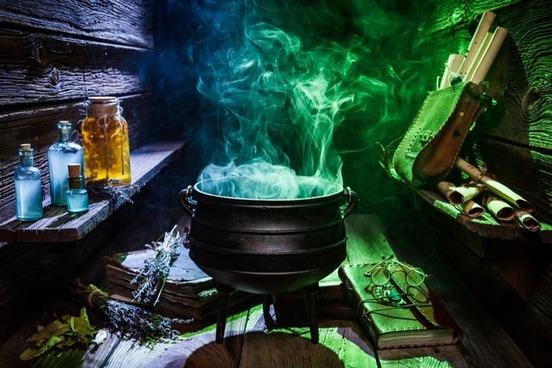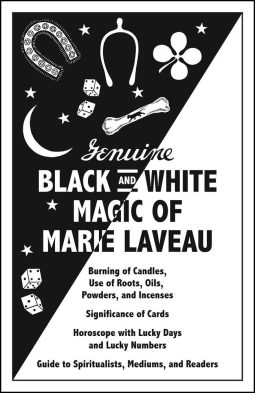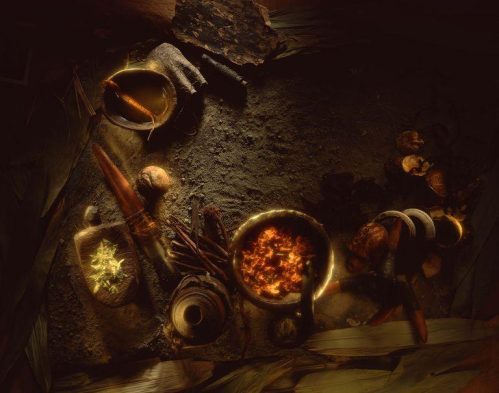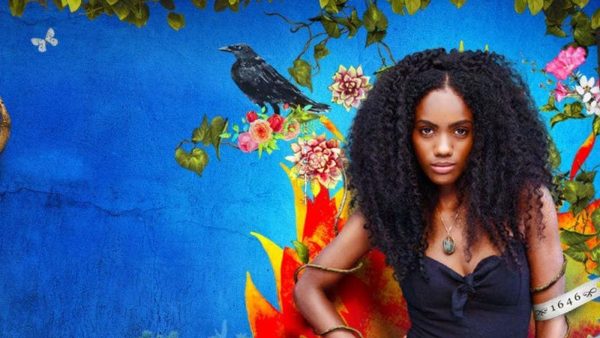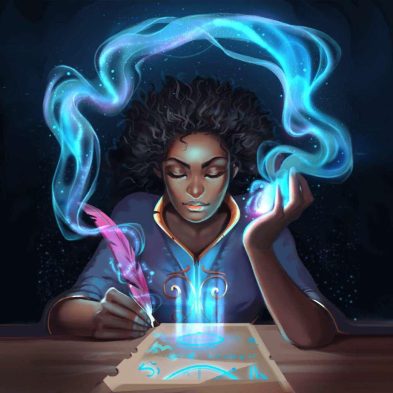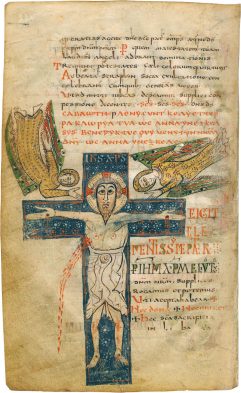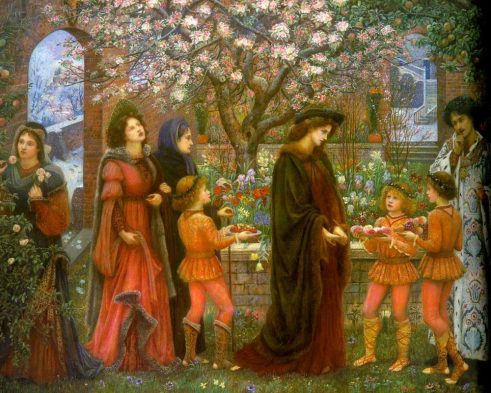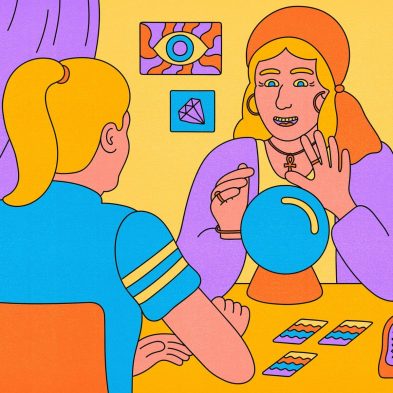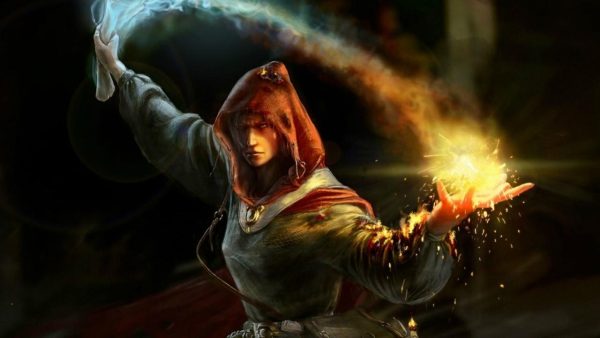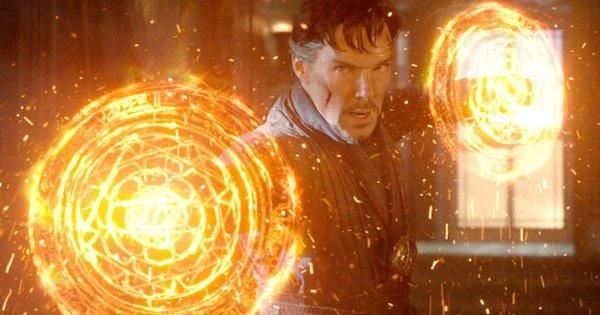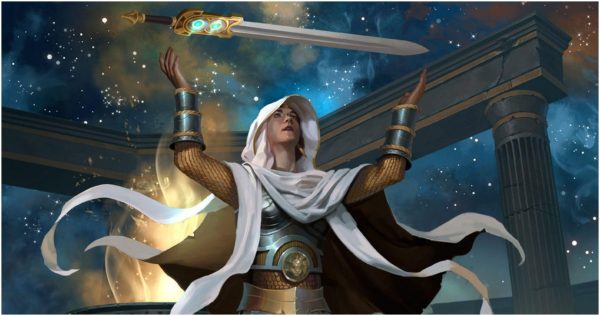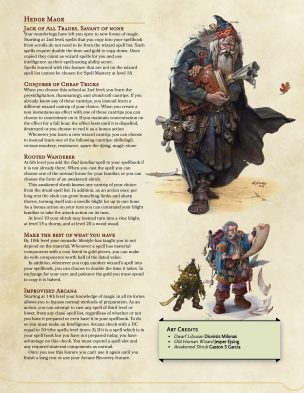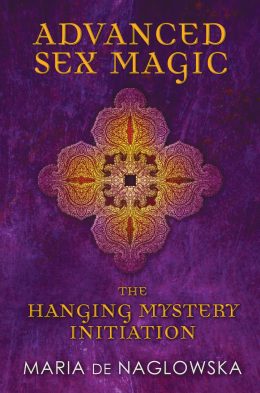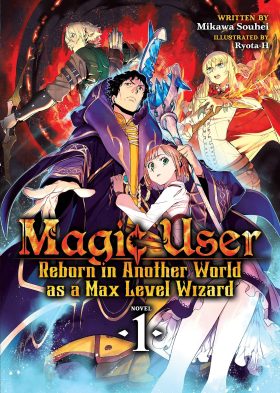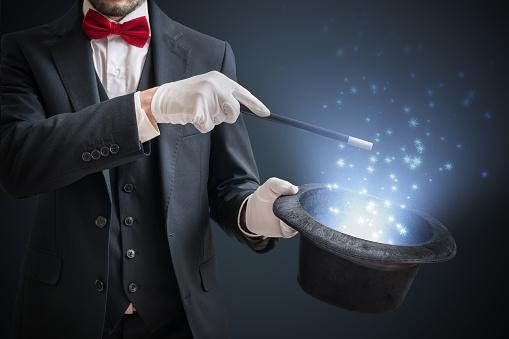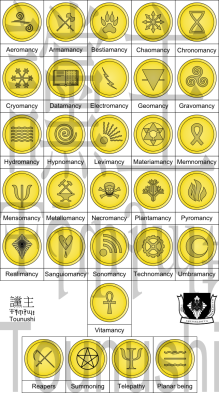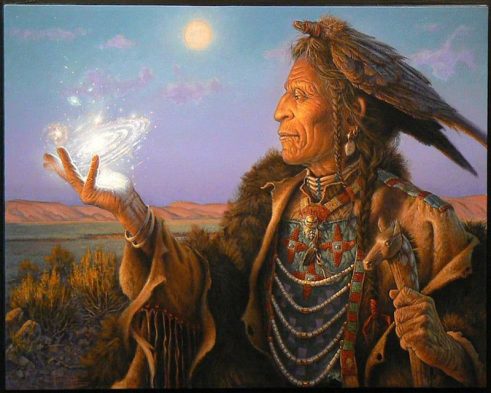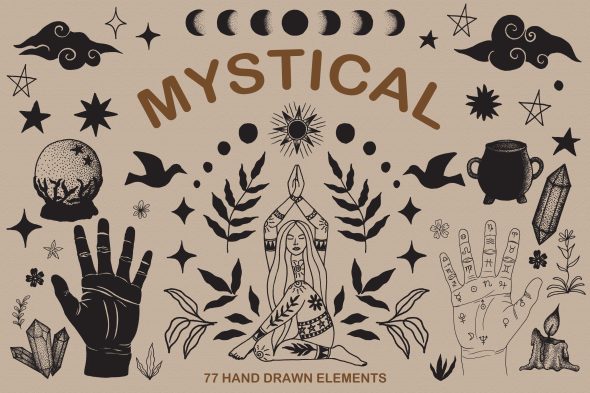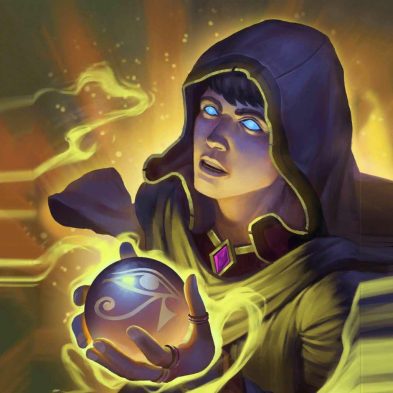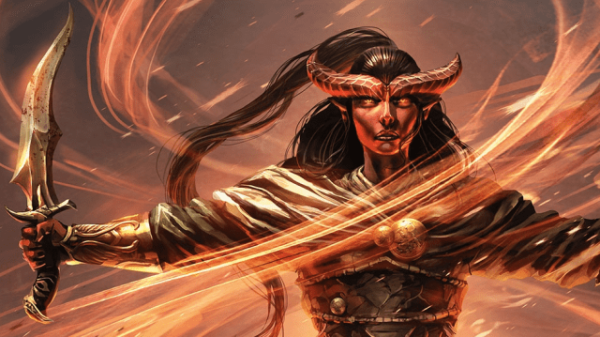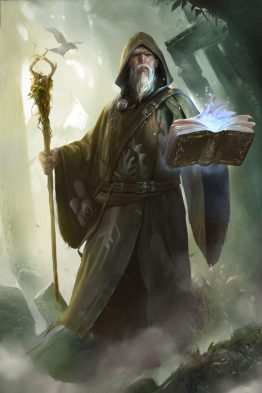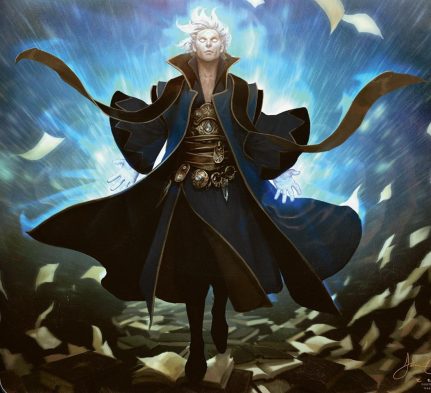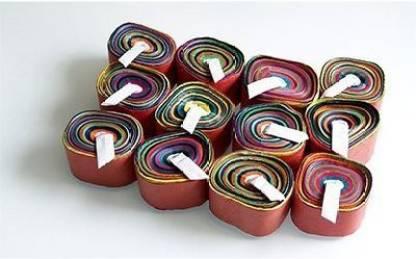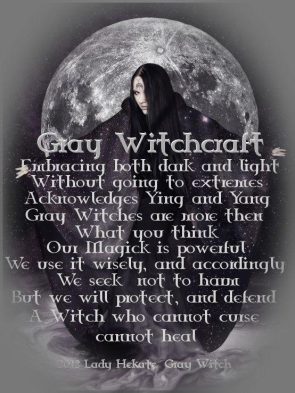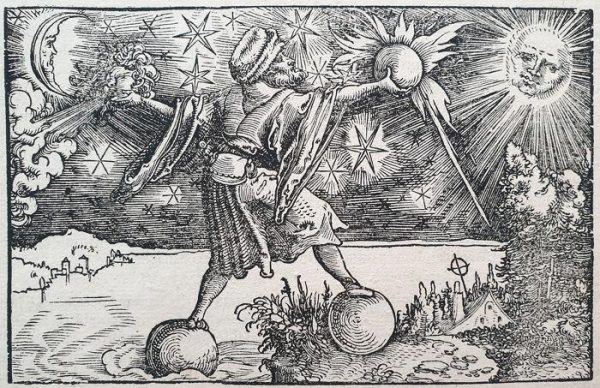Modern Western pagans acknowledge a variety of forms of magic, but they all have a similar idea. In the academic sense, Magic refers to a range of activities ranging from small-scale informal rituals to large-scale events in holy buildings, both inside and outside of sanctioned faiths.
The term “magic” comes from the Greek “magicke,” and the first time it appears in literature is in the title of a now-lost work attributed to Aristotle (384″322 BCE), which particularly refers to the art and craft of Persia’s Zoroastrians.
Modern magic involves behaviors, actions, and methods intended to interact with and influence the supernatural world, usually involving the use of an occult or secret body of knowledge”but the boundaries that define what is religion and what magic are variable, and to some extent are set by a practicing sect or even an individual, as they were for the Persian priests”but the boundaries that define what is religion and what magic are variable, and to some extent are set by a practicing sect or even an individual, as they were for the Persian
Magic is a term that refers to non-scientific methods that are used to effect change in the physical world. “Magic” can have a broader connotation in occult and esoteric circles, implying spiritual transformation. Some practitioners believe that their techniques differ significantly from those of other branches.
The following are some of the most common types of magic used by organizations that belong under the umbrella of modern Western paganism. The different forms of magic, on the other hand, are just as difficult to define as magic itself. Each magic practitioner will employ a different strategy, as not all magic has the same purpose.
Different Types of Magic
Here is the latest list of all types of Magic that you should know about.
1. Ceremonial Magic – High Magic
Ceremonial magic is a form of magic that relies significantly on book knowledge, elaborate rituals, and sophisticated sets of correspondences.
Until the late 19th century, ceremonial magic in the West was nearly completely based on Judeo-Christian myth. Many ceremonial magicians still operate in this environment today.
High magic is also ceremonial magic. Although there may be some overlap in those two notions, it is intended to serve a spiritual rather than a practical goal. It entails spiritual development, which may include heavenly knowledge, cleansing, attracting the right influences, and accepting one’s fate.
2. Folk Magic – Low Magic
Folk magic, by definition, is magic practised by ordinary people. Healing, attracting luck or love, driving away bad forces, recovering lost objects, bringing good crops, and fertility are just a few of the practical uses.
Since most practitioners were illiterate, there are little records of these practises. Simple rituals developed over time. Plant material, money, nails, wood, and other commonplace objects were used in the experiment.
Because of its practical character and affiliation with the lower classes, folk magic is frequently referred to as “low magic.”
3. Witchcraft
Because of the varied ways the word is used today versus historically, witchcraft is a very difficult phrase.
Many magical practitioners in the West are now referring to themselves as witches, and they practise a blend of ceremonial and folk magic. The workings are usually straightforward, rely on ordinary materials, and rely on emotion and purpose rather than precise procedure. Ceremonial magic may also be a source of inspiration for them, such as circle casting.
On the other hand, Witchcraft has traditionally been associated with harmful magic, which is why it has been criminalised. Witches were supposed to murder, maim, induce sterility, damage crops, poison water, and wreak havoc on their victims.
Folk magicians and witches were two distinct groups. Most witches were wrongly accused, whereas folk magicians were respected members of their communities.
4. Left and Right Hand Magic
In other words, societal traditions restrict left-hand wizardry. It’s usually confined to good magic, and it comes with cautions about the ramifications of bad spells.
Right-hand magic occurs outside of societal norms and ignores taboos, frequently gaining power by doing so. Only those who believe themselves to be on the right side of history use the word.
The left-hand route is followed by Satanic and Luciferian faiths’ magical practitioners. Thelema adherents can be classified in one of two ways.
5. Black and White Magic
The labels “black magic” and “white magic” are vague. They’re employed to distinguish between magic with a socially unacceptable aim and magic with a socially acceptable intent, roughly speaking.
Today, the boundary between harmful magic and non-harmful magic is frequently blurred. However, many techniques, like as divination, justifiable harm, love magic, and so on, are controversial. The words are avoided by many magical workers completely.
6. Alchemist
Alchemists, the scientist among magic users, occupy a mental realm somewhere between the practical and the fanciful. They explore and perform science, but their findings are mystical. They are mythologized for their quest for gold or other feats of metallurgy. Alchemists have enjoyed a bit of a fanciful rebirth, despite the fact that they were formerly difficult to differentiate as a class from wizards or mages.
7. Bruja
The Spanish word “bruja” means “witch,” therefore “brujeria” (Noun. f) implies “witchcraft.” The word refers to someone who engages in any mystical or magical activity in ordinary life. You do not have to be a bruja to participate in brujeria, however, since some brujeria (horoscopes, protection from the evil eye) might be vital precautions against malevolent forces, the evil eye, or ill luck. In fiction and popular culture, the masculine form of the term “Brujo” (Noun. m) has been used to identify male, or masculine presenting witches. We’ve also witnessed a comeback of the word as Latinx people reintroduce customs that were repressed by colonialism.
8. Druid
Druids are a class that is well-known among Dungeons & Dragons players. It’s one of those magical users whose portrayal in literature has been greatly impacted by the game. To be honest, it started off as a legitimate religious order. The Druids were the high priests of the Celtic government. They were also known for frightening the Roman invaders, owing to their ceremonial human sacrifice. They were a historically significant people, but much of their past has been reworked and mythologized. Some of it has persisted to the present day: there are Neo-Druids among modern Pagans. According to the creators, Druids are frequently shown as Irish or Irish-descended people with a strong connection to nature. It’s possible that there will be full-moon dancing.
9. Enchantress
A female-coded human or creature that wields magic is known as an Enchantress. Enchantresses are frequently described as having a high level of sensuality or hypersexuality. They are frequently portrayed as temptresses, in other words. The phrase has been most commonly ascribed to witches or other magic users who may (often evilly) utilize their wits to captivate men and divert heroes from their goals. Enchantresses have been associated with Medea or Circe.
10. Exorcist
Exorcists are well-known to horror movie fans. They fight demons and exorcise possessed individuals. Exorcists in popular culture are often guys, and occasionally attractive men, as shown in Supernatural’s Winchester Brothers. Much of this takes occur in the Catholic church, where becoming an exorcist is still possible if you are an ordained priest or bishop. The International Catholic Organization of Exorcists is its own group. This may be the professional option for you if you’re a man who enjoys meeting intriguing individuals from all walks of life.
11. Mage/Magus/Magi/Magician
You may have heard of the three Magi, also known as the Three Wise Men, in Christian religion (Balthasar, Melchior, and Caspar in case you have a Holiday quiz coming up). It’s possible that the term Magi (plural Magus, singular) is the origin of the word magician. It may have been the name of a priestly class in ancient Persia, but it has since come to mean a fictional character who studies and does magic. Other commercial magicians, such as The Amazing Jonathan, Penn and Teller, and Criss Angel, use this term to describe a career focused on spectacle and deception.
12. Necromancer
It’s time to turn on the spooky music and start scaring the neighbours, because we’re bringing the dead back to life! Anyone who brings the dead back to life in any way is referred to as a “Necromancer.” They don’t always return things in perfect condition. They could summon a few ghouls, a swarm of zombies, or vast legions of the living dead. This is a science fiction subgenre, with Victor Frankenstein being one of the most famous necromancers. Pros: For your Thriller flash mob, always have backup dancers. Clean-up is a disadvantage.
13. Psychic/Seer/Diviner/Medium
People who can view or interact with the spiritual realm or through time fall into this supernatural group. These titles are either occupations or are shown as professions. A seer has the ability to “see” into the future. A diviner has the ability to see into the past, present, and future. A medium who lives on Long Island may be a conduit to the spiritual realm, speaking or listening to ghosts and spirits.
“Psychic” can be used to describe any of them, but it’s also become a catch-all term for anyone with strong, innate, mystical abilities. This can involve a combination of all of the aforementioned abilities and telekinesis or mind reading. People are born with these skills in most depictions. However, like Cass from Victoria Schwab’s City of Ghosts, some people can become seers or mediums after having a near-death experience. Psychics may be found in a variety of genres, including Horror, Science Fiction, Action/Adventure, and Romance.
14. Sorcerer/Sorceress
Dungeons and Dragons has had a significant impact on this genre as well. A shout-out to my fellow players in the spontaneous-caster class! Because how can you not adore a character who can throw light from their fingertips in an instant? Similarly, in literature, sorcerers and sorceresses are frequently symbols of untamed, inherent magic rather than anything trained. Even in fiction, this sort of magic practitioner is sometimes referred to as a “Wizard,” “Witch,” or “Enchantress.” A Sorcerer or Sorceress is seldom someone to be trifled with or underestimated in literature, thus the word comes with a certain level of respect.
15. Warlock/Witch/Wizard
There is no way to avoid the mention of Harry Potter in these titles. Wizardry will always be linked with a school with questionable safety standards due to its cultural impact. Although Harry Potter uses a lot of classic wizard iconography, such as Merlin, broom-riding, pets (familiars), flowing robes, pointed caps, and Dumbledore’s overall style. It’s all reminiscent of common perceptions of wizards as powerful (and frequently elderly) magic practitioners.
While the term “wizard” is generally considered neutral, the terms “warlock” and “witch” are frequently linked with “evil” and “dark magic.” That can be attributed to a lengthy history of genuine witch hunts. Heinrich Kramer’s Malleus Maleficarum, written in the 15th century, is responsible for much of modern-day folklore surrounding witches. Kramer goes into depth on how witches would make devilish pacts, avoid witchcraft, and torture and prosecute witches, among other things.
The term “witch” is frequently used in a gendered context, referring primarily to females (1). Wizards and warlocks are mostly men who practice magic. As a result, Rowling refers to wizards as masculine and witches as feminine. Warlocks are male witches who are usually depicted as wicked.
16. Animist
The belief in natural objects, natural occurrences, and even the cosmos itself is known as animism. In the sense of a magic practitioner, an Animist communicates with these spirits and persuades them to obey his will through prayers, threats, or even mind control. In MERP, it’s used as a synonym for Cleric.
17. Apprentice
A low-level magic practitioner who a mentor is still training.
18. Archmage
A powerful and high-status magician or magus. It’s a term that’s frequently used in fantasy literature.
19. Changellor
A Mentalist. Mutant Chronicles uses it.
20. Cleric
A priest, for example, is a member of an organised group of a religious institution. Clerics in many fantasy games, such as D&D or MERP, are bestowed extraordinary abilities by the gods they worship.
21. Conjurer
A conjurer or summoner who specializes in (or solely performs) conjuring and summoning.
22. Distorter
A magician who specializes in (or only practices) altering reality and/or generating physical occurrences. Mutant Chronicles uses it.
23. Druid
A cult that flourished in the British Isles in antiquity. Earth, Water, Air, Fire, and Spirit were the five elements that the Druids worshipped. Druid magic is generally done in groups, and it usually has something to do with agriculture or nature. Used as a sort of priest in D&D and AD&D, although a more accurate definition may be found in Mage: The Ascension, in the Verbena tradition.
24. Sympathetic Magic Or Imitation Magic
In Voodoo and other disciplines, sympathetic or imitation magic is used. It necessitates the employment of symbolic artefacts such as a Voodoo doll, fetishes, and effigies, which are imitations of the genuine thing or person. This impersonation is used in magic to influence the actual item, event, or person. A lock of hair, for example, is frequently used as a symbol of the actual thing, event, or person.
25. Enchanter
Enchantress is the more prevalent feminine version. An enchanter, seducer, or tempter is a magic practitioner who specializes in (or practises solely) enchanting, seducing, and enticing magic. When an Enchantress is mentioned, it is typically in a bad light.
26. Fortuneteller
Someone who can (or claims to be able to) foretell the future.
27. Hedge Wizard
He’s a hermit. A solitary magic user who lives away from civilization. Tolkein’s Radagast the Brown, for example.
28. Incantatar
An Enchanter, to be precise. Incantatrix, the feminine version, is more prevalent. In the Forgotten Realms campaign setting, the word refers to a Prestige Class.
29. Sex Magic
All sexual action is included in this form of magic. It makes use of sexual arousal/orgasm energy to achieve a goal. The sexual energy is said to allow the individual to enter an other reality. Paschal Beverly Randolph, an American occultist in the nineteenth century, is credited with this magic.
30. Casting A Spell
These two types of magic are regarded diametrically opposed. These words are used by some occult practitioners, particularly in ceremonial magic. Left-hand magic is regarded malicious black magic, and right-hand magic is considered beneficent white magic.
The attributed trait is the subject of debate. Some practitioners think that left-hand magic isn’t always evil or black magic. Instead, they believe it just pursues a route with fewer limitations and moral norms, depending on the group evaluating it. The practitioner’s purpose is thought to determine whether the magic is good or evil.
31. Magic User
Anyone who uses magic, i.e. modifies reality in a supernatural fashion, is referred to as a sorcerer.
32. Magician
Magus is a name derived from the old version of the word. Nowadays, it refers to a stage magician who makes a livelihood by performing illusions and desertions. Stage magicians rely on psychology and sleight of hand to create their illusions, rather than having magical skills. In MERP, it was used incorrectly as a synonym for Mage.
33. Folk Magic
Folk magic, often known as low magic, is a broad category of magic that is frequently linked with witches. Chanting, spell casting, blood magic, and spirit summoning, such as summoning demons or benign spirits, are all examples. It’s classified as low magic, as opposed to high magic, which is regarded to be a more exalted kind of magic, such as supernatural spirits, both good and terrible.
34. Mancer
A suffix that denotes the type of magic a magic user performs or specializes in, such as necromancer in fantasy literature or technomancer in Mage: the Ascension.
35. Medicine Man
A person with magical or supernatural powers, as defined by the North American Indians. A shaman is a person who practises shamanism.
36. Mentalist
A magician who specializes in (or exclusively practises) influencing other people’s minds, ideas, and feelings.
37. Mystic
Anyone with magical abilities. Mage: the Ascension and Mutant Chronicles both use it.
38. Prophet
A man who speaks on behalf of a god or another divinity, or as a result of divine inspiration. The term prophet is sometimes used interchangeably with the terms seer and visionary in literature to refer to someone who sees visions.
39. Seer
A visionary’s more popular moniker.
40. Shaman
A person who works as a link between the natural and supernatural worlds, utilising magic to heal illnesses, predict the future, and control spiritual forces, among tribal people. Shadowrun makes use of this term.
41. Earth Magic
Earth magic is centred on the earth’s energy. Ley lines, crystals and minerals, alchemy, plants, trees, animal spirits, and supernatural spirits such as angels are all examples of this. Healings and other incredible feats can be achieved by connecting with the energies of the Earth.
42. Vikan
People who practise the Druids’ religion. The Vikans are the common believers, whereas the Druids are the priests. The church persecuted both normal Vikans and Druids.
43. Visionary
A person who has the ability to perceive visions. A practitioner of divination, clairvoyance, and scrying who specializes in (or performs exclusively) divination, clairvoyance, and scrying.
44. Warlock
Wr-Loga is a Middle English word that means Covenant Breaker. A man who is a witch. Warlocks, like witches, are thought to be wicked by the general public. Nowadays, the phrase refers to anybody who does wicked magic.
45. Witch
According to popular mythology, a woman who has made a contract with an evil entity that provides her magical abilities. The majority of witchcraft is ritual magic, which entails crafting enchantments around a cauldron. Witches are said to be malevolent, devil’s mortal servants. In actuality, the witches were ordinary women who practised a religion that was identical to that of the Vikans. The church also persecuted them. Many individuals were burnt alive, mainly women, because they were accused of being witches, even though many of them were not. In AD&D, the word is used in its pejorative sense.
46. Wizard
Wis-Ard is a derivative of the Old English Wis-Ard, which meaning Wise Man. Wizards were said to have the ability to control nature and heal illnesses and wounds. Nowadays, the term “magician” applies to anybody who does magic. J.R.R. Tolkien used it in his books.
47. Elemental Magic
Usually consists of four or five parts (water, fire, earth, air, and sometimes spirit). A person can only utilize one form of magic, or the elements can be mixed and matched in many ways. Avatar the Last Airbender is probably the most obvious and well-known example of this. Each nation had someone who could bend one of the four elements, with the Avatar being the only one who could bend all four. There were only four elements in this universe, however there was also a spirit world”whose rules are considerably murkier”and unique powers of some, extremely experienced benders such as lightning (fire), metal (earth), and blood (water).
However, in terms of literature! The Wheel of Time has an element-based magic system where channelers may learn to weave the elements into particular functions. Spirit is one of the five components in this cosmos. Single-element weaves, such as fireballs, are possible, but most weaves are considerably more complicated. For example, air is commonly used to magnify one’s voice, but a touch of fire may make it more powerful. All five are frequently used in healing, especially by the most competent or Talented in that field.
While a Talent does not usually make a channeler proficient in a single element of a weave, it does allow them to perform specific types of weaves better than others”such as healing or the creation of gateways”there are differences between what male and female channelers can do”for example, women are often weaker at any weaves, including earth”and while a Talent does not usually make a channeler proficient in a single element of a weave, it does allow them to perform specific types of weaves better
48. Superpower Magic
A diverse magic system where almost any ability may be used. Each person’s “superpower” usually has some element of originality, so even if two persons have comparable skills, they are not exactly the same.
While one may anticipate this to be seen only in superhero books, there are plenty of examples in epic fantasy as well. Marie Lu’s Young Elites series is the greatest illustration of this in its most basic form. A blood disease spreads across the country, and the children who survive end up with magical abilities. Manifesting illusions (Adelina), wielding fire (Enzo), manipulating emotions (Raffaele), and influencing animals are just a few instances (Gemma). The fever has left its physical mark on all Young Elites in some fashion, making them stand out in a crowd.
The Graceling Realm series, for example, offers a wider range of abilities, many of which are said to be worthless. There are a lot of Graces that are quite similar to one another. The two most talked-about organisations are mind-readers and warriors. Even yet, there appears to be some variation, since one mind-reader can discern a person’s wishes while another can just detect what they are thinking about. Some people are gifted at singing, holding their breath for absurdly extended periods of time, or smelling someone and knowing precisely what sort of food they are wanting at the time.
Gracelings are physically marked in the same way that the Young Elites are, but it’s a lot easier: while they’re young, their eyes settle into two different hues. It’s sometimes two different hues of the same color. The presence of worthless Graces helps to distinguish this universe, as some people strive to find a use for their Grace, while others try to live a regular life despite it.
Even series such as the Grishaverse and Strange the Dreamer have a tenuous link to the superpower category. Strange the Dreamer features a tiny cast of magicians, but any technical limitations don’t constrain their powers. One pukes forth moths with eyes she can see through, while another can summon clouds.
There are five types of Grisha in the Grishaverse, and a human may only belong to one of them, just like in Avatar: The Last Airbender. Tailors can totally change a person’s look; squallors can create storms; durasts can create very powerful armor; and so on. Despite this, due to the diverse nature of the magic”unbound by an element or any other specific thing”it may still be classified as “superpower” magic.
49. Spellwork Magic
In some fashion, uses incantations (chants), spells, or potions. It’s your typical witch or wizard storey, although with a twist.
The most famous example of spellwork wizardry is Harry Potter. Its language actually includes witches and wizards, and pupils at Hogwartz learn how to cast spells with their magic wands and concoct potions using magical materials. Magic is not available to everyone; it distinguishes the witches and wizards from the non-magical Muggles.
However, the Inheritance Cycle might be used as an example in terms of epic or high fantasy. Though the magic is largely based on spellwork from the Ancient Language, which allows for anything from fireballs to scrying (communication over great distances), the literature also includes prophesies and potions, especially from Angela the witch.
The surprise in The Magicians was even more intriguing to me because the magic depends heavily on the words (which might come from any language, living or dead) and the complex finger gestures necessary for a spell to work, especially in the TV programme. It was more of an art form than the normal flailing of hands and arms that goes along with spellcasting. While I have not read Brandon Sanderson’s work outside of The Wheel of Time, his Mistborn series uses the burning of metals to bestow certain powers, which is a less obvious example. It would also qualify as spellwork magic because it includes the utilisation of some natural components in order to provide additional powers.
50. Animal Magic
Whether it’s an animal friend or the power to shapeshift into a beast, some sort of animal connection is employed. There are no animals in His Dark Materials who are more closely linked than those in His Dark Materials. At least, that’s how it seems in Lyra’s reality. Every individual on this planet is born with a daemon, an animal representation of their soul. There don’t appear to be any animals that aren’t bound, and there aren’t any people who aren’t born with an animal daemon. Killing a human inevitably kills their daemon, and killing a daemon invariably destroys a person’s soul, therefore they seldom survive.
However, animal bonds may not necessarily have to be between one human and one animal. Wargs in A Song of Ice and Fire have the ability to see through a variety of creatures, however they prefer to look out of the ones they are nearest to.
When it comes to shapeshifters, the usual option is human/wolf, which results in werewolves (or even werecats, as seen in The Inheritance Cycle). This does not, however, have to be limited to existing creatures. Dragons can take on a human form in Rachel Hartman’s novel Seraphina. This human form can give birth to half-human, half-dragon children, who are unable to adopt dragon form despite having certain dragon traits. These half-dragons have superpower magic, which allows them to have powers such as literal gut sensations, sensing other half-dragons, climbing ability, and becoming abnormally huge.
51. Multi-World
Certain characters can go to an other world with rules that differ from their own.
Multiverses are a rare occurrence in the realm of fantasy. They are unquestionably one of the most uncommon magic systems. You could wonder how it’s even a magic system and not just an aspect of the scenario. Well, the power to travel between worlds is generally reserved for particular characters, giving it a magical characteristic.
The Shades of Magic series is the greatest defining example I can think of. Anatari are a rare kind of humans that have the ability to travel across four realms. They also have the capacity to employ blood magic for other purposes and a spell to activate the magic. Other individuals can utilize magic as well, but only Antari has the ability to travel between realms.
Of course, other instances of multi-verse magic are His Dark Materials and The Chronicles of Narnia, in which each universe is distinct from the previous, with its own set of rules, and the only constant is that some individuals may travel between them.
The Inkheart and Daughter of Smoke and Bone series, for example, are less well-known. To bring things to life, Inkheart needs a magical voice, as well as the capacity to move between worlds of make-believe. They have the option of bringing others with them. There are slits in the sky in the DoSaB series that allow individuals to move from one universe to the next. (I think Laini Taylor has linked the series to her current Strange the Dreamer series, putting them both in the same universe.)
52. Natural Magic
Natural magic’s beginnings are pagan. Natural magic is included in the category of white magic. Natural magic focuses on Earth magic as well as all natural forces in the cosmos. Alchemy, herbology, and astrology are examples of such disciplines. This magical technique frequently includes several divination skills, which can be employed in white, grey, or black magic.
53. Gray Magic
Gray magic is the way to go if you want to practise a neutral spell. There is no specific purpose or advantage for this sort of activity. This magical technique is somewhere in the between of white and black magic. Its goal is to defeat evil while receiving the advantages of white magic. Some practitioners use it to illustrate what magic is in a sort of performance as a neutral magic.
54. Necromancy
The technique of resurrecting the dead, known as necromancy, was considered evil magic. It was also known as demonic magic, because it involved the use of corpses and blood to summon demons.
55. Ceremonial And Ritual Magic
This type of magic is commonly seen in black magic, although it may also be found in white, natural, and grey magic. High magic refers to ceremonial magic, which is not to be mistaken with white magic. This type of learnt magic entails conducting sophisticated ritual magic using specialised equipment to achieve a specific magic aim.
56. Renaissance Magic
It was a common technique at the time, dubbed renaissance magic. This category included a number of divination techniques. These, as well as white, grey, and black, were frequently employed in natural magic.
57. Enochian Magic
Enochian magic necessitates the use of ceremonial magic. The ancient apocalyptic Book of Enoch is thought to be the source of much of this magic. The goal of many of these ceremonial acts is to summon and command spirits. Usually, these spirits are celestial creatures.
58. Candle Magic
The art of candle magic is quite simple. This sort of spellwork may be utilized to cast any kind of magic spell. You may make this a ritual or ceremonial sort of magic, or you can keep it simple by declaring your objective, lighting the candle, and concentrating on it.
59. Color Magic
The sort of energy that each hue draws is the focus of color magic. It’s frequently used in conjunction with other types of magic, such as candle magic. In color candle magic, you choose a candle hue according to what you want, such as a green candle to attract money or good health.
60. Bright Red Light Candles
Chaos magic is a relatively recent form of magic that emerged in England in the 1970s. Austin Osman Spare is credited with inventing what he called “success magic,” or magic that is based on results. This magic entails various rituals, symbolisms, and, of course, occultism to achieve your goals. The magic is frequently self-directed, and you may use whichever bits of other magic you choose to make it.
61. Neoplatonism Magic
Neoplatonism was a magical practise that began in Alexandria around the third century AD and was derived from Platonism, a prominent practice/belief. The belief system of Neoplatonism is that there is only one divine source. Gods, souls, and everything else linked to life were explained using the nature of the One. This link with the One was made via magic.

